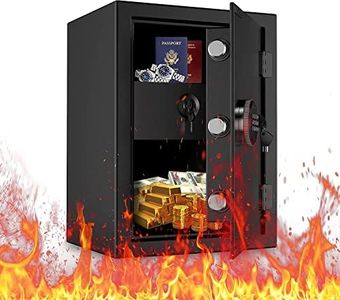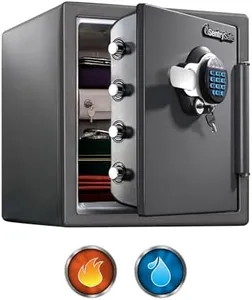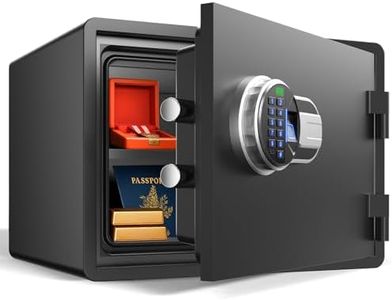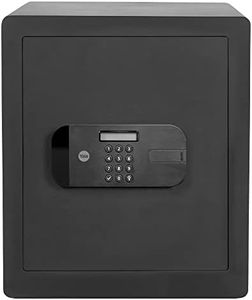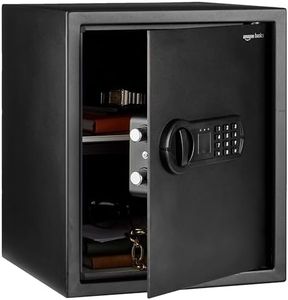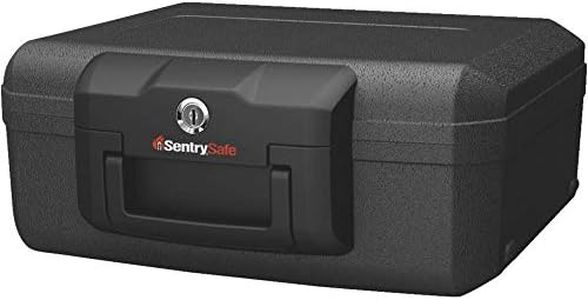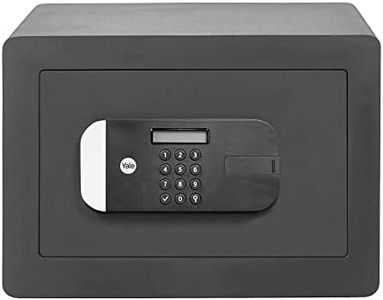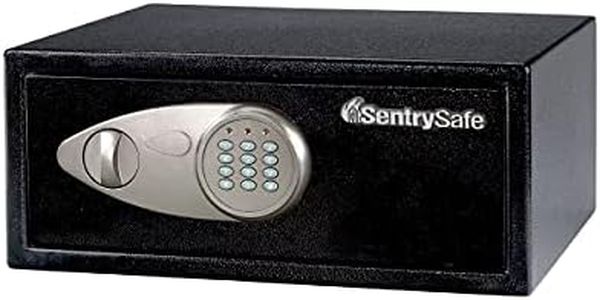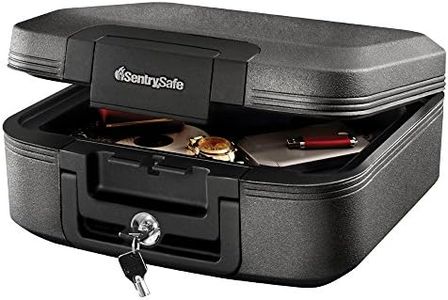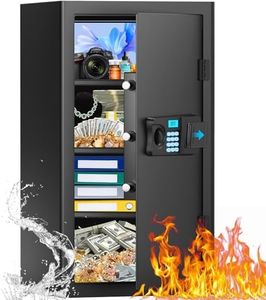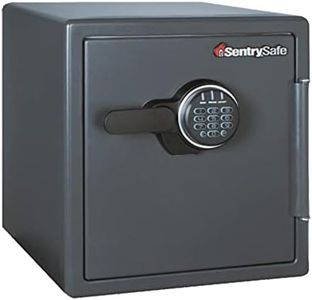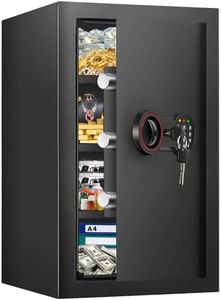We Use CookiesWe use cookies to enhance the security, performance,
functionality and for analytical and promotional activities. By continuing to browse this site you
are agreeing to our privacy policy
10 Best Fireproof Home Safes
From leading brands and best sellers available on the web.Buying Guide for the Best Fireproof Home Safes
When choosing a fireproof home safe, it’s crucial to think about what you want to protect—like important documents, cash, jewelry, or digital media—and the types of threats you want to guard against, such as fire, theft, or water. The ideal safe will offer the right blend of protection for your belongings, physical size to fit your space and storage needs, and usability so that you can access your items as needed. Take your time to understand the specifications before making a choice to ensure your valuables are safe in any situation.Fire Rating/Fireproof DurationThe fire rating tells you how long a safe can protect its contents from high temperatures, often measured in minutes or hours, and at what heat level (such as 1 hour at 1700°F). This spec is important because a higher rating means your valuables are better protected during a fire—most house fires can burn hot and fast, so a longer duration is preferable. Typically, safes are divided by 30, 60, or 120 minutes of protection. For storing paper documents, a 30-minute safe might be sufficient for some, but for increased peace of mind, especially if you live far from emergency services or have digital items, a 1-hour or higher rating is a smarter choice.
Capacity/SizeThis refers to how much the safe can hold, usually measured in cubic feet or liters. It’s important because you don’t want to run out of space, nor do you want a bulky safe that doesn’t fit in your hiding spot or home. Small safes (less than 1 cubic foot) fit passports and small valuables, medium sizes (1–2 cubic feet) are ideal for documents and small electronics, while larger safes can store bigger items or multiple folders. Think about your current needs and if you might add more items in the future, and make sure the external and internal dimensions work for your storage space.
Locking MechanismThe locking mechanism determines how you open the safe—common types include key locks, combination dials, and electronic keypads. This spec matters for both convenience and security. Key locks are simple but can be opened if someone finds your key; combinations don’t require power but may be slower to access; electronic keypads are quick but need batteries and may have override keys. If quick access is important for you, such as needing documents in an emergency, an electronic option is handy; if you prefer reliability with no need to worry about batteries, a mechanical combination or key lock is better.
Water ResistanceSome safes are also rated for water resistance, ensuring protection from sprinklers, flooding, or efforts to put out a fire. This feature is important if you live in an area with a high risk of water damage or if you’re worried about natural disasters. Values are usually given in hours of waterproofing and depth of submersion. Decide based on your location—if you have a basement or live in a flood-prone area, prioritize this spec.
Weight and PortabilityWeight impacts how easy it is to move or steal your safe. Heavier safes are more secure because they are hard to carry away, but they can be difficult to install or reposition. Some smaller or lighter safes come with the option to bolt them to the floor or wall. If theft is a big concern, a heavier or bolted-down unit is best. If portability matters, such as for renters or those who might move the safe, a lighter option could be a better fit, but always balance it with security needs.
Interior Organization FeaturesInterior organization includes shelves, drawers, and compartments that help keep your items neat and easy to find. This is important for ease of use—if you have a variety of items like documents, jewelry, passports, or media, good organization makes them accessible when you need them. If you mostly store documents, simple shelves may be enough; for mixed valuables, look for safes with adjustable trays or specialized compartments.
Certification and RatingsSafes may carry certifications from independent organizations that test security and fireproofing, such as UL or ETL. These show that the safe has been tested and meets certain standards, giving you confidence in its claims. If you’re storing extremely valuable or irreplaceable items, certifications can be an important guide—choose a safe with recognized ratings for your needs, especially for insurance or peace of mind.
